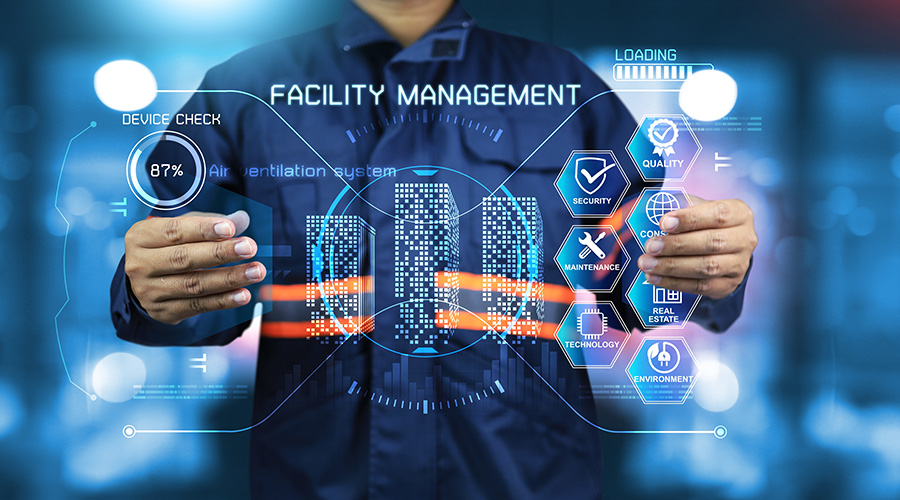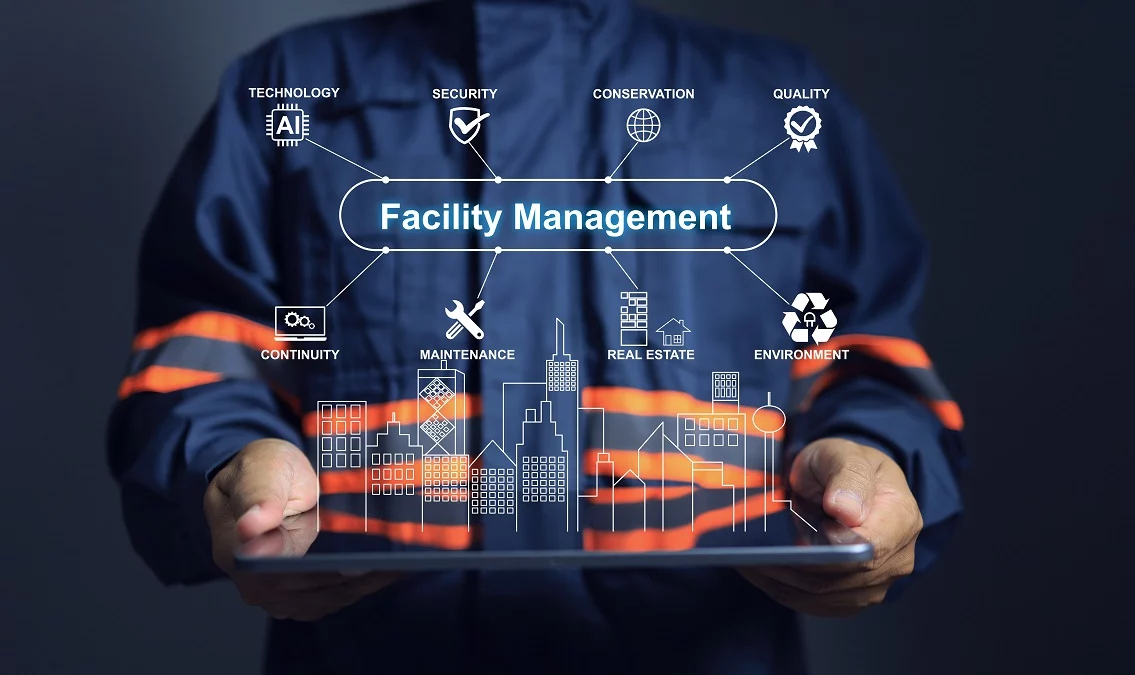Facilities management has evolved significantly with the integration of advanced technologies, enhancing operational efficiency, cost-effectiveness, and overall productivity. This article delves into the pivotal technologies transforming facilities management, their benefits, implementation strategies, and addresses common queries related to this technological evolution.
Introduction
In the contemporary business landscape, facilities management is undergoing a paradigm shift, driven by technological advancements. The adoption of technologies such as Building Information Modeling (BIM), Internet of Things (IoT), cloud-based solutions, and advanced asset management software has revolutionized how organizations manage and maintain their facilities.
These innovations not only streamline operations but also contribute to substantial cost savings and improved resource utilization. This article explores these transformative technologies and their impact on facilities management.

1. Building Information Modeling (BIM) Technology
BIM technology involves creating and managing digital representations of physical spaces, encompassing structural elements like walls, windows, and asset locations. This digital modeling facilitates data-driven decisions regarding space utilization and enables efficient redesigning of real estate portfolios to meet evolving business needs. By providing a comprehensive visualization of facilities, BIM enhances planning and operational efficiency.
2. Space Management Software
As businesses adapt to changing requirements, optimizing space utilization has become crucial. Space management software assists organizations in implementing strategies like hot-desking and desk booking, ensuring efficient use of available space while maintaining employee safety. This technology aids in reducing costs associated with underutilized spaces and enhances overall workplace efficiency.
Read More: FintechAsia .net | Catalyzing Financial Innovation Across Asia
3. Asset Management Software
Effective asset management is vital for operational efficiency. Advanced asset management software enables organizations to monitor and manage assets, including HVAC systems, lighting, and security systems. By utilizing sensors and monitoring systems, facility managers can promptly identify potential issues, reducing maintenance costs and extending asset lifespans.
4. Cloud-Based Data Solutions
Managing vast amounts of data related to assets, facilities, and personnel is a significant challenge. Cloud-based data solutions offer remote management capabilities, allowing facility managers to oversee operations from any location. These tools streamline data collection and storage processes, mitigate data loss risks, and provide customized access levels to authorized personnel, enhancing data security and accessibility.
5. Internet of Things (IoT) Integration
IoT-based solutions have become invaluable in facilities management. By deploying sensors and connected devices, organizations can gather real-time data on energy consumption, space utilization, and environmental conditions. This data facilitates proactive maintenance, optimizes resource usage, and improves employee quality of life by ensuring comfortable and efficient work environments.
6. Predictive Analytics and Automation
The integration of predictive analytics and automation in facilities management enables organizations to anticipate potential issues and automate routine tasks. By analyzing historical data, predictive analytics can forecast equipment failures, allowing for proactive maintenance and reducing downtime. Automation of repetitive tasks, such as scheduling and inventory management, frees up personnel to focus on strategic initiatives, enhancing overall productivity.
7. Enhanced Safety and Security Measures
Advanced technologies play a crucial role in enhancing safety and security within facilities. Video surveillance, access control systems, and IoT sensors contribute to deterring unauthorized access and promptly responding to emergencies. These technologies ensure a safe working environment, protect assets, and comply with regulatory requirements.

8. Integration with Existing Systems
Modern facilities management technologies are designed to integrate seamlessly with existing business systems, such as Customer Relationship Management (CRM) and Enterprise Resource Planning (ERP) platforms. This integration ensures a cohesive operational environment, reduces data silos, and enhances cross-functional collaboration.
9. Scalability and Flexibility
Technological solutions in facilities management offer scalability and flexibility, allowing organizations to adapt to changing demands. Whether expanding operations or downsizing, these technologies can adjust to new requirements without significant disruptions, ensuring continuous operational efficiency.
10. Cost Reduction and Sustainability
Implementing advanced technologies leads to cost reductions through optimized resource utilization, reduced energy consumption, and minimized manual interventions. Additionally, these technologies support sustainability initiatives by promoting energy efficiency and reducing the environmental footprint of facilities.
Conclusion
The integration of advanced technologies in facilities management has revolutionized the industry, offering numerous benefits such as improved efficiency, cost savings, enhanced safety, and sustainability. By embracing innovations like BIM, IoT, cloud-based solutions, and predictive analytics, organizations can optimize their facilities management processes, ensuring they meet the evolving demands of the modern business landscape.
Read More:10 ways to leverage AI infacilities management
FAQs
1. What is Building Information Modeling (BIM) in facilities management?
BIM involves creating digital representations of physical spaces, allowing for efficient visualization and management of structural elements and assets within a facility.
2. How does IoT enhance facilities management?
IoT integrates sensors and connected devices to collect real-time data on various parameters like energy usage and space occupancy, facilitating proactive maintenance and optimized resource utilization.
3. What are the benefits of cloud-based data solutions in facilities management?
Cloud-based solutions enable remote management, streamline data collection and storage, mitigate data loss risks, and provide customized access to authorized personnel, enhancing operational efficiency.
4. How does predictive analytics contribute to facilities management?
Predictive analytics forecasts potential equipment failures and maintenance needs, allowing for proactive interventions, reducing downtime, and extending asset lifespans.

